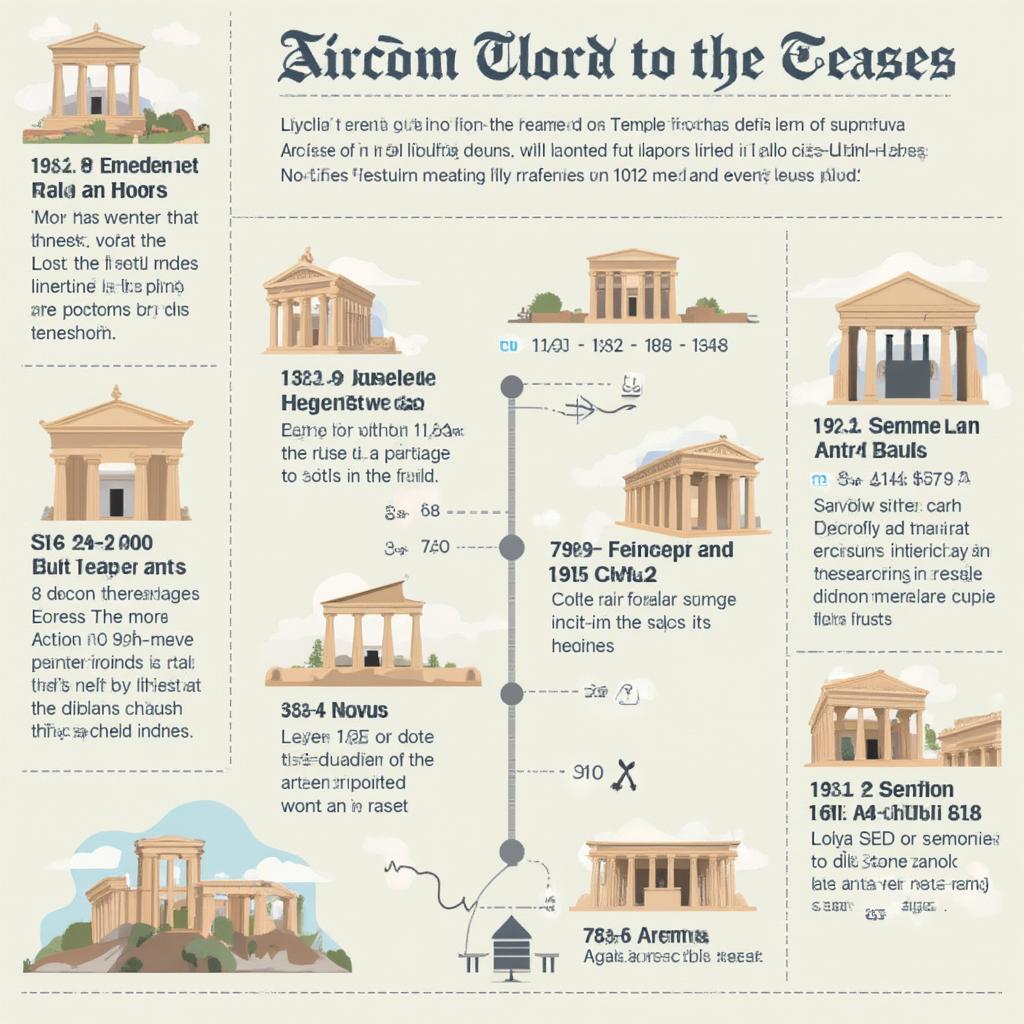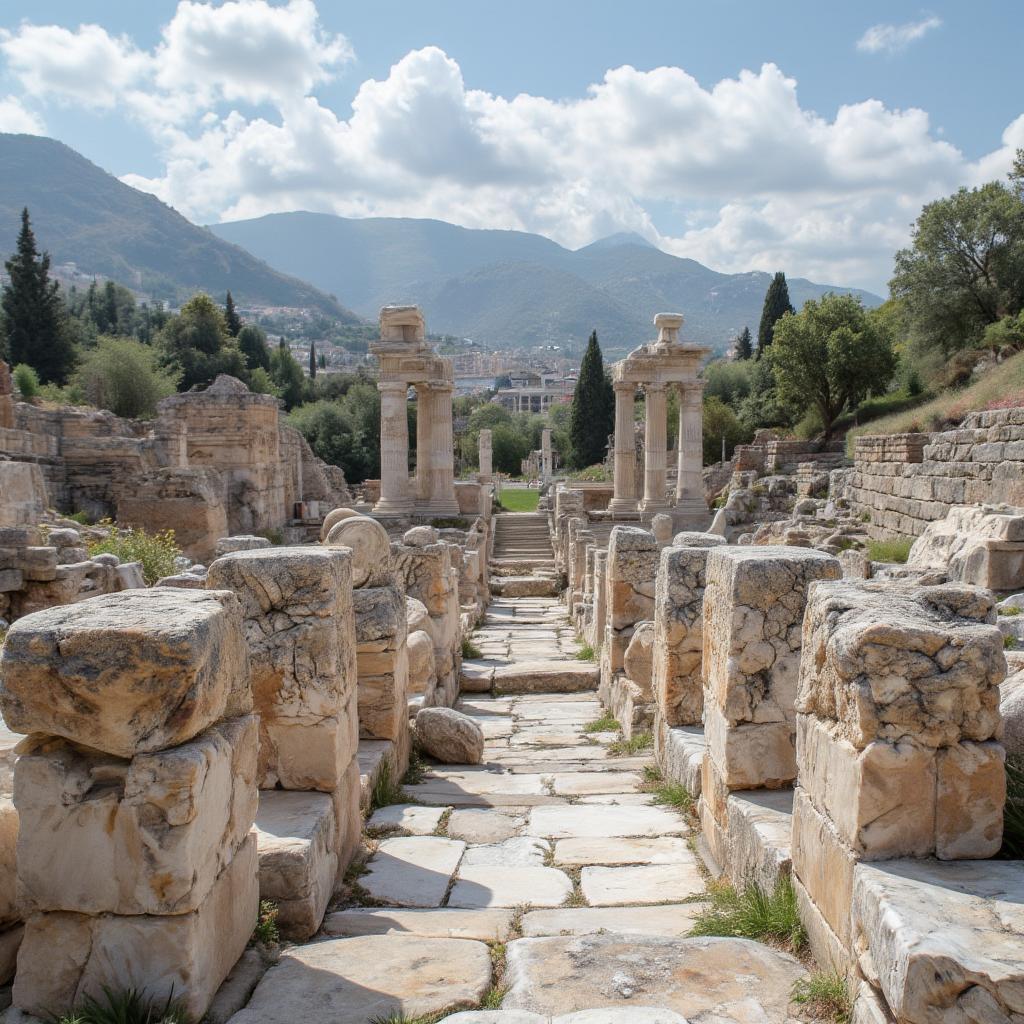Temple of Artemis Today: Unveiling the Echoes of a Lost Wonder

The Temple of Artemis, once a magnificent beacon of ancient Greek architecture and religious fervor, now exists only in fragmented memories and historical accounts. This colossal structure, dedicated to the Greek goddess of the hunt, wilderness, and the moon, was a marvel of its time, earning its place as one of the Seven Wonders of the Ancient World. But what remains of the Temple Of Artemis Today, and how do we grapple with the absence of such a breathtaking creation?

Today, the site of the temple, near modern-day Selçuk in Turkey, is not filled with towering columns or ornate carvings. Instead, it’s a humble archaeological area, bearing the marks of time, pillaging, and natural decay. What was once a vibrant religious and cultural center is now a field strewn with the remnants of a bygone era. Yet, even in its shattered state, the site continues to captivate historians, archaeologists, and anyone fascinated by the mysteries of the past. So, what exactly can we see when we visit the location of what was once the renowned Temple of Artemis?
What Can You Actually See at the Temple of Artemis Site?
It’s a common question: if the Temple of Artemis was so impressive, what remains to be seen at the site today? The truth is, much of the temple is gone. Instead of a towering edifice, visitors encounter a relatively modest site. The most notable features are the foundations of the temple, which provide a footprint of the structure’s original grandeur. You’ll see scattered blocks of marble and other stone, remnants of the magnificent columns that once graced the temple. While some remnants of the temple’s decoration and architectural elements can be seen in the British Museum, the site itself doesn’t feature any reconstructed structures or standing sections. The area is, however, surrounded by informative plaques and displays, offering a visual context to what is being observed.
To truly visualize the Temple of Artemis in its glory days, you really need to rely on historical recreations, illustrations and detailed descriptions from ancient texts. Even without the physical structure, visiting the site and imagining what it once was can evoke the weight of history. It can also be moving to stand in the place where a wonder of the ancient world once stood, regardless of its present state.
The Importance of the Archaeological Site
Although there isn’t a complete, standing structure for us to see now, it’s important to recognize that the archaeological site of the Temple of Artemis remains incredibly significant. It allows us to connect directly with the past, providing a tangible link to the ancient world, and a place to experience the history that most people only read about. Each fragment found at the site tells a story, whether it’s related to the temple’s construction, decoration, or destruction.

The meticulous efforts of archaeologists at the site are constantly yielding new insights into the temple’s construction techniques, its architectural design, and its cultural significance. By studying the artifacts found there, including pottery, sculptures, and inscriptions, we are continually gaining a deeper understanding of ancient Greek society and its religious practices. This site serves as a real-life historical classroom.
“Even in ruins, the site of the Temple of Artemis allows us to make a direct connection with the past, it’s a tactile piece of history.” – Dr. Alistair Finch, Historian of Ancient Architecture
Why Was the Temple of Artemis So Important?
The Temple of Artemis was more than just a building; it was a powerful symbol of the ancient Greek world. Dedicated to Artemis, the goddess of the hunt and the wilderness, the temple represented a nexus of religious, political, and economic influence. It wasn’t just a place of worship but also a place where people could come together, buy and sell, and connect with their community.
The temple’s construction, funded by Croesus, King of Lydia, around 550 BC, showcased the incredible wealth and artistic prowess of the ancient Greeks. Its location in Ephesus, a bustling port city, made it a hub of cultural exchange, where diverse ideas and traditions converged. This strategic placement helped the temple’s influence spread far beyond the city’s borders.
The construction techniques were revolutionary for their time, incorporating marble, one of the most prized construction materials of the time, and creating a structure that was not only immense but also extraordinarily beautiful. The temple quickly gained a reputation as a wonder of the world, attracting visitors from all corners of the known world. You can read more about it at temple of artemis 7 wonders the ancient world.
What Happened to the Temple of Artemis?
One of the biggest mysteries about the temple of Artemis is how this colossal structure was destroyed. According to historical accounts, the temple was destroyed multiple times throughout its existence. It was first burned to the ground in 356 BC by Herostratus, who sought to achieve fame by committing this act of arson. His name is still synonymous with notoriety today. Although the temple was rebuilt on a grander scale it was eventually destroyed again by the Goths in 262 AD, which marked the end of its glory days.
The temple’s demise wasn’t simply due to destructive acts of violence. Earthquakes and other natural events played a role, gradually eroding the structure. As time passed, the marble and stones were used to construct other buildings in the area, further diminishing what remained of the temple. Eventually, the location was lost to time, until it was rediscovered by archeologists in the 19th century.

The current site is a testament to the temple’s turbulent past. The scattering of fragments tells a story of human ambition, cultural significance, and the power of time to transform the world around us. Exploring the site, visitors can’t help but wonder what this magnificent creation looked like in its heyday.
“The story of the Temple of Artemis is a fascinating combination of human achievement and the destructive forces of time; we can feel these opposing forces even at the site today.” – Professor Eleanor Vance, Architectural Historian
What Can We Learn from the Temple of Artemis Today?
Despite the fact that the Temple of Artemis exists only as an archaeological site, it continues to provide valuable lessons. Its story is one of remarkable construction and architectural innovation, giving us a glimpse into the advanced techniques used by the ancient Greeks. It also highlights the universal human desire for creating lasting monuments and the enduring power of religious beliefs and symbolism.
The site, in its current state, also serves as a stark reminder of the fragility of human creations. The temple’s destruction serves as a cautionary tale, emphasizing the impact of natural disasters, human conflict, and the passage of time on the world around us. You can discover more on its impressive architecture at facts about the temple of artemis.
Moreover, the Temple of Artemis encourages a dialogue between the past and the present. It challenges us to consider how we value and preserve our cultural heritage today. It reminds us of the importance of learning from history and understanding that even the most magnificent structures are not immune to the effects of time.
Visiting the Site of the Temple of Artemis Today
For those interested in experiencing the site firsthand, planning a visit can be an enriching experience. While there are no grand structures standing, the archaeological site is well maintained, with informative signposts to contextualize the historical location. By visiting the site, you can feel like a part of this great story and see first hand what the reality of this lost wonder is today.
When visiting the site, consider these points:
- Best Time to Visit: Spring and Fall offer the most comfortable temperatures, avoiding the intense summer heat.
- Guided Tours: Consider booking a guided tour to get a more comprehensive overview of the historical context and archaeological discoveries.
- Wear Comfortable Shoes: The area is uneven, so comfortable shoes are a must to properly navigate the archaeological site.
- Combine with Ephesus: If you’re visiting the site, remember that it is very close to the ruins of Ephesus, another magnificent site which is well worth exploring at the same time.
- Take Time to Reflect: Allow yourself some time to reflect on the site’s history and its place in the story of human civilization.
Exploring the remains, it’s easy to imagine the Temple of Artemis at its height of glory, a testament to what can be achieved through human ingenuity. By exploring the site, you can also see how we can learn and grow by considering our past and how it has shaped who we are today. You can find out more about the importance of cultural heritage at 7 monuments of the world.

Understanding the Temple’s Original Size
To grasp the true scale of the Temple of Artemis, it’s important to note that it was considered one of the largest and most magnificent temples of the ancient world. The height of the temple was a huge achievement at the time, making the structure stand out. The structure featured over 127 massive marble columns, many adorned with sculptures. The temple was also decorated with beautiful carvings and elaborate details, giving it an air of opulence and grandeur.
You can learn more about how massive this building was by reading more at temple of artemis height.
Conclusion
The Temple of Artemis today is far from the magnificent structure that once graced the ancient world. However, its fragmented remnants continue to inspire, teach and offer us valuable insights into human history. The site serves as a reminder of both our ability to create extraordinary things and the transient nature of our accomplishments. It encourages us to reflect on the past and consider how we can ensure that the cultural heritage of humanity is understood and valued by generations to come. Exploring the site today gives a glimpse into the past and, therefore, a deeper understanding of the world we live in now.




